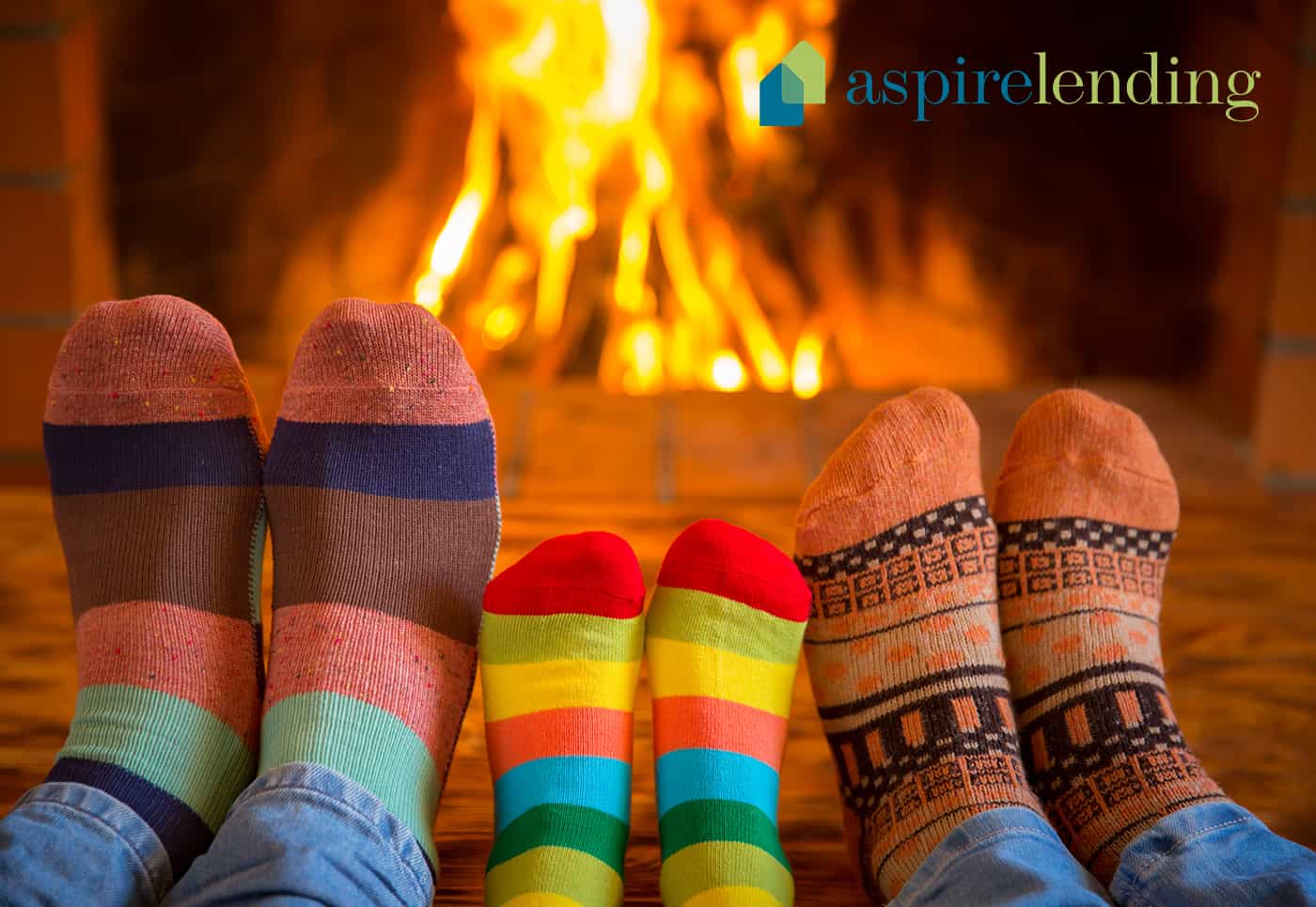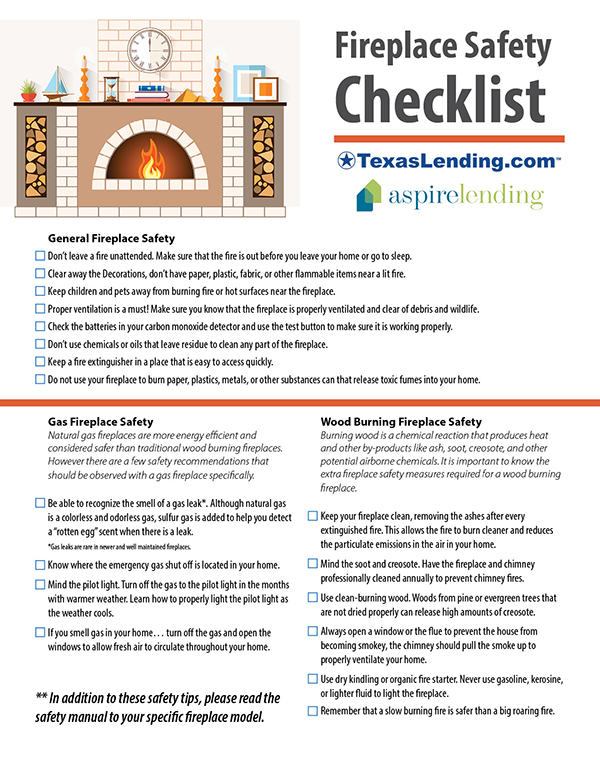
Fireplace Safety Checklist
Fireplace Safety Checklist
Fireplaces are a classic feature treasured in many homes, but they also can be a potential hazard if some safety measures aren’t observed. Soot and creosote buildup can ignite, improper ventilation can fill your home with dangerous fumes, and untended fireplaces can cause major house fires.
In this article we are listing a number of fireplace safety rules that you should know as a homeowner:
General Fireplace Safety
- Don’t leave a fire unattended. Make sure that the fire is out before you leave your home or go to sleep.
- Clear away the Decorations, don’t have paper, plastic, fabric, or other flammable items near a lit fire.
- Keep children and pets away from burning fire or hot surfaces near the fireplace.
- Proper ventilation is a must! Make sure you know that the fireplace is properly ventilated and clear of debris and wildlife.
- Check the batteries in your carbon monoxide detector and use the test button to make sure it is working properly.
- Don’t use chemicals or oils that leave residue to clean any part of the fireplace.
- Keep a fire extinguisher in a place that is easy to access quickly.
- Do not use your fireplace to burn paper, plastics, metals, or other substances can that release toxic fumes into your home.
Gas Fireplace Safety
Natural gas fireplaces are more energy efficient and considered safer than traditional wood burning fireplaces. However there are a few safety recommendations that should be observed with a gas fireplace specifically.
- Be able to recognize the smell of a gas leak*. Although natural gas is a colorless and odorless gas, sulfur gas is added to help you detect a “rotten egg” scent when there is a leak. *Gas leaks are rare in newer and well maintained fireplaces.
- Know where the emergency gas shut off is located in your home.
- Mind the pilot light. Turn off the gas to the pilot light in the months with warmer weather. Learn how to properly light the pilot light as the weather cools.
- If you smell gas in your home… turn off the gas and open the windows to allow fresh air to circulate throughout your home.
Wood Burning Fireplace Safety
Many older homes have traditional wood burning fireplaces.. Burning wood is a chemical reaction that produces heat and other by-products like ash, soot, creosote, and other potential airborne chemicals. It is important to know the extra fireplace safety measures required for a wood burning fireplace.
- Keep your fireplace clean, removing the ashes after every extinguished fire. This allows the fire to burn cleaner and reduces the particulate emissions in the air in your home.
- Mind the soot and creosote. Have the fireplace and chimney professionally cleaned annually to prevent chimney fires.
- Use clean-burning wood. Avoid woods from pine or evergreen trees that are not dried properly because they can release high amounts of creosote.
- Always open a window or the flue to prevent the house from becoming smokey, the chimney should pull the smoke up to properly ventilate your home.
- Use a dry kindling or organic fire starter. Never use gasoline, kerosene, or lighter fluid to light the fireplace.
- Remember that a slow burning fire is much safer than a big roaring fire.
- Store your wood properly to avoid moisture build-up that causes mold and fungus growth.
Download our FREE printable Fireplace Safety Checklist
** In addition to these safety tips, please read the safety manual to your fireplace model.
We encourage you to talk to all children and family members in your home about fireplace safety. Fireplaces can bring warmth and set the stage for building memories in your home. Keeping fireplace safety in mind should be part of the fun.
If you are a new home owner, make sure the functionality of the fireplace is included in your home inspection report. If you choose not to have a whole-home inspection, then make sure to hire a professional chimney sweep to inspect you fireplace before lighting it the first time.
If you would like to see more home ownership blogs like this one, follow our Facebook page.


